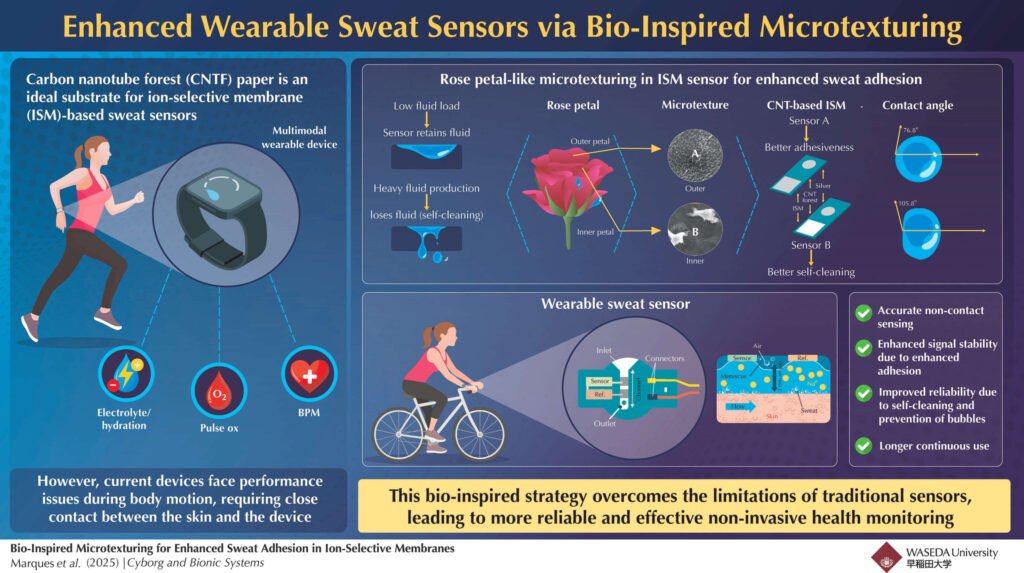A research team at Waseda University has developed a new class of wearable sweat sensors that mimic the microtexture of rose petals—offering improved comfort, stability, and reusability for health monitoring. These bio-inspired sensors could transform how we track hydration, electrolyte balance, and physical performance, especially in smartwatches, prosthetics, and exoskeletons.
Traditional sweat sensors rely on hydrophobic ion-selective membranes (ISMs) that require tight contact with the skin to maintain signal stability. This often involves adhesives or patches that can cause discomfort, skin irritation, and even infections with prolonged use. To overcome these limitations, the Waseda team designed a non-contact sensor that maintains performance without touching the skin—thanks to a clever adaptation of nature’s own engineering.
Led by Ph.D. student Marc Josep Montagut Marques, the researchers studied the wetting behavior of rose petals. These petals are hydrophilic when exposed to small amounts of water, allowing droplets to stick. But when moisture exceeds a threshold, they become hydrophobic and trigger a self-cleaning effect. The team replicated these microtextures using molds of inner and outer rose petals, creating two types of polyvinyl chloride (PVC)-based ISMs layered onto carbon nanotube (CNT) substrates.
Sensor A, based on inner petal textures, showed the highest water retention and was ideal for monitoring sweat during movement. Sensor B, modeled after outer petals, also demonstrated strong performance. Both sensors exhibited self-cleaning behavior when exposed to excess moisture, preventing bubble formation and signal spikes—common issues in conventional sweat sensors.
To test their design, the team 3D-printed wearable devices with microchannels that directed sweat to the sensors while maintaining a 2 mm gap from the skin. This setup reduced irritation and improved user comfort. In running trials, the devices accurately measured sodium concentrations in sweat, helping assess electrolyte loss and hydration status. During low-sweat periods, the sensors retained fluid within the channels, and once sweat levels rose, the self-cleaning mechanism activated—ensuring consistent signal quality. Beyond comfort and accuracy, the sensors are reusable and easy to clean, making them practical for daily use.
Article from Waseda University: Bio-Inspired, Self-Cleaning Sweat Sensors for Comfortable Wearable Health Monitoring
Abstract in Cyborg and Bionic Systems: Bioinspired Microtexturing for Enhanced Sweat Adhesion in Ion-Selective Membranes

